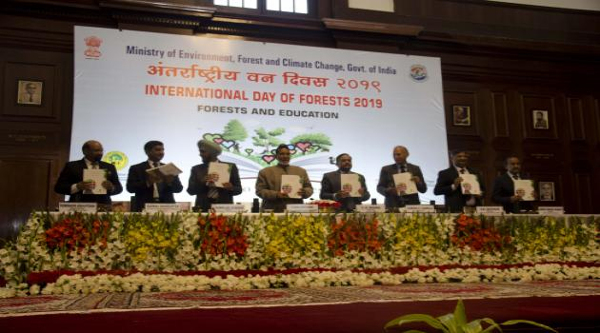Concerns over resource depletion are increasing in India because rising factory output, urbanization and population putting pressure on existing resources.
National Resource Efficiency Policy has been drafted by the Ministry of Environment, Forest and Climate Change with the aim to double the recycling rate of key materials to 50 per cent in next five years and also enable upcycling of waste.
“The agenda is to develop a circular economy. This can be achieved by two measures—firstly by recycling the materials, and secondly, by increasing the efficiency of use of these resources. These are the policy aspects that we are looking at. Recycling is about industries, which will do it. Resource efficiency is a concept which needs to be followed across all sectors,” Union environment secretary Mr. C.K. Mishra said.
India’s 96 per cent mining capacity is located in 13 mineral-rich states of Madhya Pradesh, Tamil Nadu, Jharkhand, Gujrat, Odisha, Chhattisgarh, Karnataka, Maharashtra, Andhra Pradesh, West Bengal, Telangana, Goa and Rajasthan.
India remains import dependent for critical materials such as molybdenum, copper and nickel even after meeting its current demand for raw materials for thermal power generation, iron and steel, aluminium, cement and mineral fuels for coal and lignite. This could make it vulnerable to supply shocks, considering rising material consumption, which is up six-fold from 1.18 billion tonnes in 1970 to 7 billion tonnes in 2015.
“Linear production and consumption is leading to a lot of wastage in the entire value chain. Opportunities exist at each and every stage of the product cycle which can be utilized, especially at a time, when the economy is going through a rough patch. The automobile sector is under serious stress and dependent on import of a lot of materials; this is the right time for India to position itself better to future demands,” said Souvik Bhattacharjya, fellow at The Energy and Resources Institute (TERI), in New Delhi.
For different sectors, National Draft Policy (NDP) will help in developing the resource efficiency strategies which is a three-year action plan and the seen key sector which has been identified to begin this plan are automobile, plastic packaging, building and construction, electrical and electronic equipment, solar photo-voltaicand steel and aluminium sector.
Under the act by National Green Tribunal (NGT) which imposed the ban on diesel vehicle, to collect such vehicles, government has set up the centres for it and carry out for the deregistration process and shredding centres which would segregate the materials for recycling.
By 2020, across all major urban centres, around 20 official dismantlers would be established. For the vehicles which made before 1990, 75 per cent recycling rate would be considered for it, 85 per cent for the vehicles between 1990-2000 and 90 per cent for the vehicle after the 2000.
Another concern is plastic waste in which 8 per cent contribution is of solid waste.
By 2025, NDP aims to reach at 100 per cent recycling also reuse rate Polyethylene Terephthalate (PET) plastic. NDP also aims to reduce the dependency on virgin materials and increase the re-use of construction and demolition waste so that, approximately 30 per cent of total public procurement of materials for civil construction can be from recycled materials by 2025.
Source: IBEF
Image Courtesy: Currenthunt
You may also like
-
Trade Connect E-platform For Exports Is Single Window, Fast, Accessible And Transformational: Shri Piyush Goyal
-
Five Successful Years of Pradhan Mantri Kisan Maandhan Yojana (PM-KMY)
-
Global Study by Leading Experts : Swachh Bharat Mission Drives Significant Reductions in Infant Mortality Rates in India
-
India Graphene Engineering and Innovation Centre (IGEIC) Under the Vision of Viksit Bharat@2047 Launched
-
Government Launches Vishvasya-Blockchain Technology Stack
